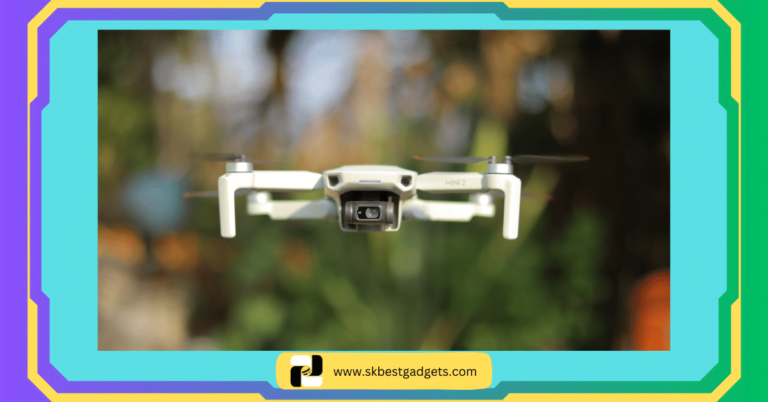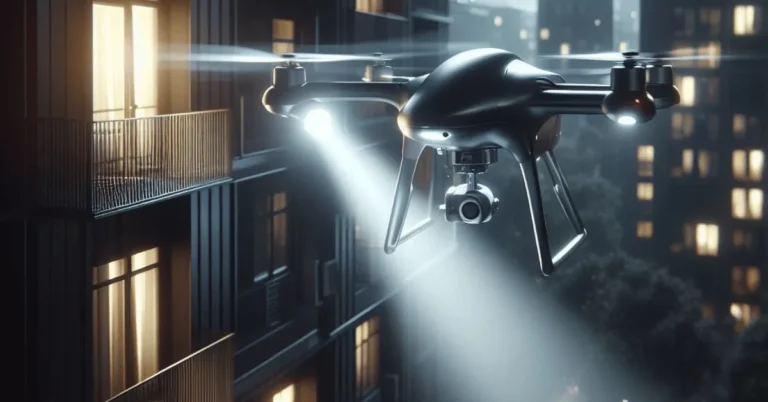What is the Difference Between a Drone and a Robot? Is It Just the Programming?

Drones and robots are two of the most fascinating technological innovations of our time. A drone, also known as an unmanned aerial vehicle (UAV), is an aircraft without a human pilot on board.
Drones can be controlled remotely by a human operator or autonomously by onboard computers.
Initially developed for military applications, drones have evolved significantly over the years, finding uses in a wide range of fields such as agriculture, surveillance, filmmaking, and delivery services.
On the other hand, a robot is a machine capable of carrying out a complex series of actions automatically, often programmable by a computer.
The concept of robots dates back to ancient myths and early automatons, but it wasn’t until the 20th century that robots began to take on their modern form.
Today, robots are utilized in various industries, including manufacturing, healthcare, and even household chores, performing tasks ranging from assembly line work to surgical assistance.
One common misconception is that drones are simply a type of robot. While it’s true that drones share some robotic features, such as automation and programmability, they are distinct in their primary function and design.
Drones are specifically built for aerial navigation, whereas robots can be designed for a multitude of environments, including land, sea, and even space.
This distinction sets the stage for a deeper exploration into the fundamental differences between these two technologies.
As we delve further into the subject, we will uncover the unique characteristics, functionalities, and applications that distinguish drones from robots.
By understanding these differences, we can better appreciate the technological advancements that make each of these innovations unique and indispensable in their own right.
Curious about how many propellers a drone needs? Check out our info on Can a Drone Fly with One Propeller?
Technical Distinctions
The technical differences between drones and robots are rooted in their distinct components and design philosophies.
Both drones and robots incorporate sensors, actuators, control systems, and power sources, but their configurations and functionalities diverge significantly.
Drones, specifically designed for aerial navigation, prioritize components that facilitate flight. Key elements include aerodynamics, propulsion systems, and flight control mechanisms.
Aerodynamics play a crucial role in ensuring stability and control during flight. Propulsion systems, typically composed of electric or combustion engines coupled with rotors or propellers, provide the necessary thrust for aerial maneuvers.
Flight control mechanisms, such as gyroscopes, accelerometers, and GPS modules, enable precise navigation and positioning.
These components collectively optimize drones for tasks like aerial photography, surveillance, and delivery services.
On the other hand, robots are designed for versatility across various environments, including land, sea, and air, and for diverse purposes such as industrial automation, medical assistance, and service tasks.
Unlike drones, robots may incorporate wheels, tracks, legs, or even underwater propellers, depending on their intended environment.
Their control systems often include more complex algorithms for tasks like object manipulation, path planning, and interaction with humans or other machines.
Additionally, the power sources for robots can vary widely, from batteries to solar panels or even tethered power supplies, influenced by their operational requirements and environments.
These technical distinctions profoundly influence the capabilities and applications of drones and robots. Drones excel in tasks that require aerial mobility and quick deployment over large areas.
In contrast, robots demonstrate superior adaptability and functionality across a broader spectrum of tasks and environments.
Understanding these differences not only highlights the specialized nature of each technology but also underscores the importance of choosing the right tool for specific applications.
Wondering if ND filters are right for your drone footage? Check out our guide on Should I Use ND Lens Filters When Shooting Drone Video? for the inside scoop!
Programming and Control Systems
Programming stands at the core of both drones and robots, serving as the brain that governs their operations.
However, the complexity and type of programming involved can vary significantly between the two.
Drones typically utilize specialized flight control software designed to manage their aerodynamic properties and ensure stable flight.
This software often requires real-time data processing capabilities to handle tasks such as navigation, obstacle avoidance, and environmental awareness.
For instance, a drone’s flight control system must constantly adjust to wind conditions, altitude changes, and potential obstacles, necessitating a highly responsive and adaptive programming framework.
In contrast, robots encompass a broader range of applications and therefore employ a more diverse array of programming languages and frameworks.
Industrial robots, for instance, often use the Robot Operating System (ROS), a flexible framework for writing robot software.
ROS provides a collection of tools, libraries, and conventions to simplify the task of creating complex and robust robot behavior across a wide variety of robotic platforms.
Furthermore, autonomous robots might integrate artificial intelligence (AI) to enable more sophisticated decision-making processes.
This could involve machine learning algorithms that allow the robot to learn from and adapt to its environment over time, enhancing its functional capabilities.
While programming is undeniably a critical component of both drones and robots, it is not the sole factor that differentiates them.
The specific requirements of their respective tasks dictate the nature and complexity of the programming involved.
For instance, a drone’s programming is highly focused on maintaining stable flight and real-time response to environmental conditions, whereas a robot’s programming may be more varied, depending on whether it is designed for industrial automation, autonomous navigation, or human interaction.
These distinctions in programming and control systems highlight the unique challenges and capabilities inherent in drones and robots, underscoring the nuanced differences between these two types of technology.
Want to capture stunning cinematic drone footage? Learn How to Choose the Right ND Filter for Your Drone and take your skills to the next level!
Applications and Use Cases
Drones and robots each possess distinctive capabilities that make them invaluable across various fields.
Drones, primarily known for their aerial capabilities, are extensively used in aerial photography, offering unique perspectives for creative and commercial purposes.
These devices enable high-resolution images and videos from vantage points previously unattainable, making them indispensable tools for cinematography and real estate.
In agriculture, drones have revolutionized crop monitoring and management. Equipped with multispectral sensors, they can assess plant health, optimize irrigation, and even apply fertilizers with precision, thus enhancing yield and reducing resource use.
Surveillance and security sectors also benefit from drones, which provide real-time monitoring over large areas, aiding in crowd control, border security, and disaster response.
Delivery services are another burgeoning field for drones. Companies like Amazon and UPS are exploring drone technology to expedite the delivery of parcels, especially in remote or congested areas.
The ability to navigate through airspace allows drones to bypass traditional traffic constraints, promising faster and more efficient logistics solutions.
Contrastingly, robots are predominantly ground-based and find extensive applications in manufacturing. Industrial robots have automated repetitive and hazardous tasks, improving efficiency and safety in production lines.
In healthcare, robots assist in surgeries with high precision, perform tasks in hospitals, and even provide companionship to the elderly.
Domestic robots, such as vacuum cleaners and lawnmowers, are becoming commonplace, simplifying household chores.
Moreover, robots play critical roles in exploration, whether it’s navigating the depths of oceans or traversing the surfaces of other planets, where human presence is either risky or impossible.
The specific design and capabilities of drones and robots are tailored to their respective environments. Drones, with their aerial mobility, excel in tasks involving large-area coverage and quick deployment.
Robots, designed for stability and precision, are ideal for structured environments requiring detailed work.
As technology continues to evolve, the line between drones and robots may become increasingly blurred.
Innovations in autonomous systems and artificial intelligence could see drones undertaking more ground-based functions and robots acquiring aerial capabilities, potentially redefining their roles and expanding their applicability.
Wondering if your store-bought drone qualifies for DJI Care Refresh? Look no further! [Can People Get DJI Care Refresh on a Store-Bought Drone?]







